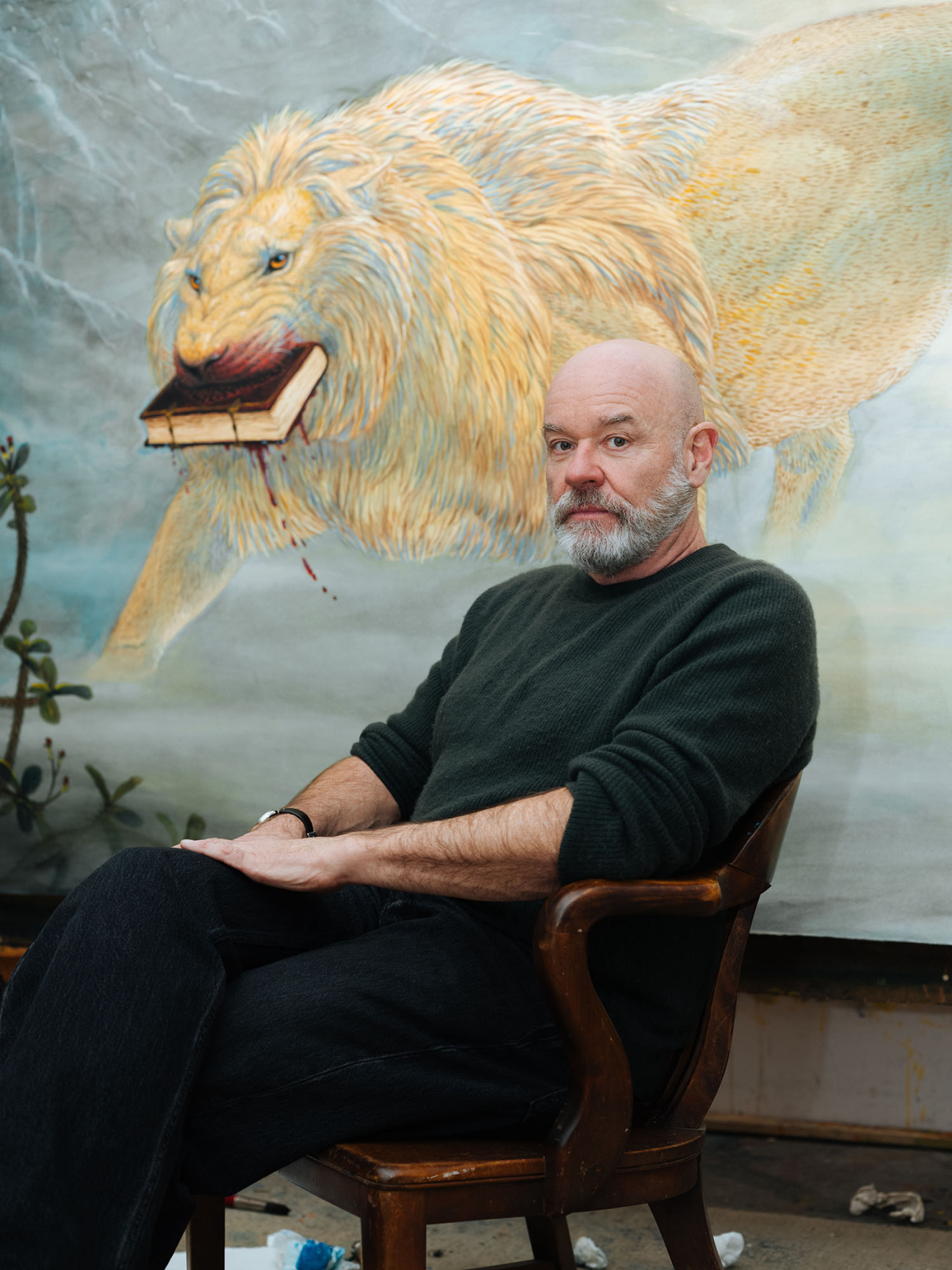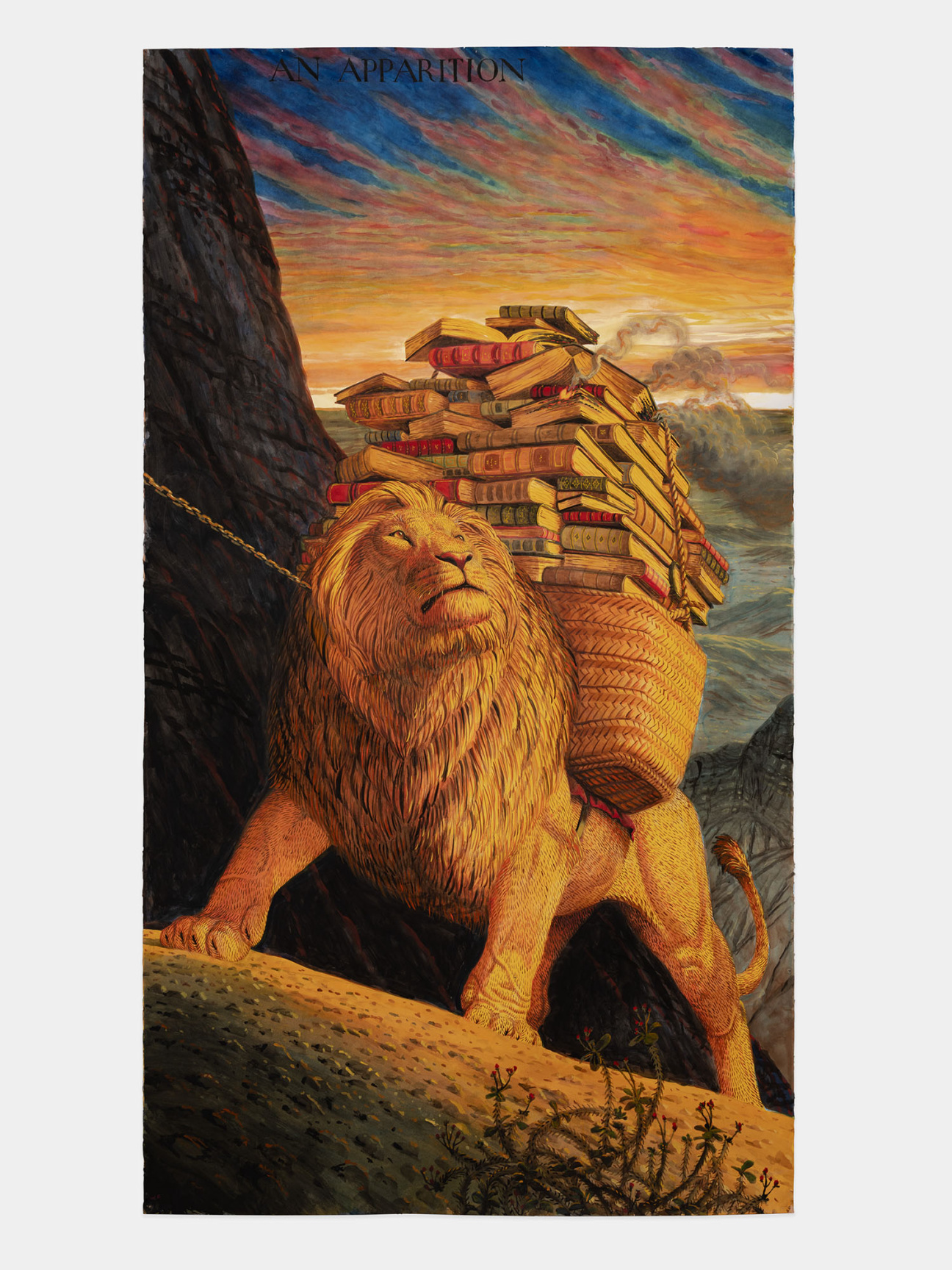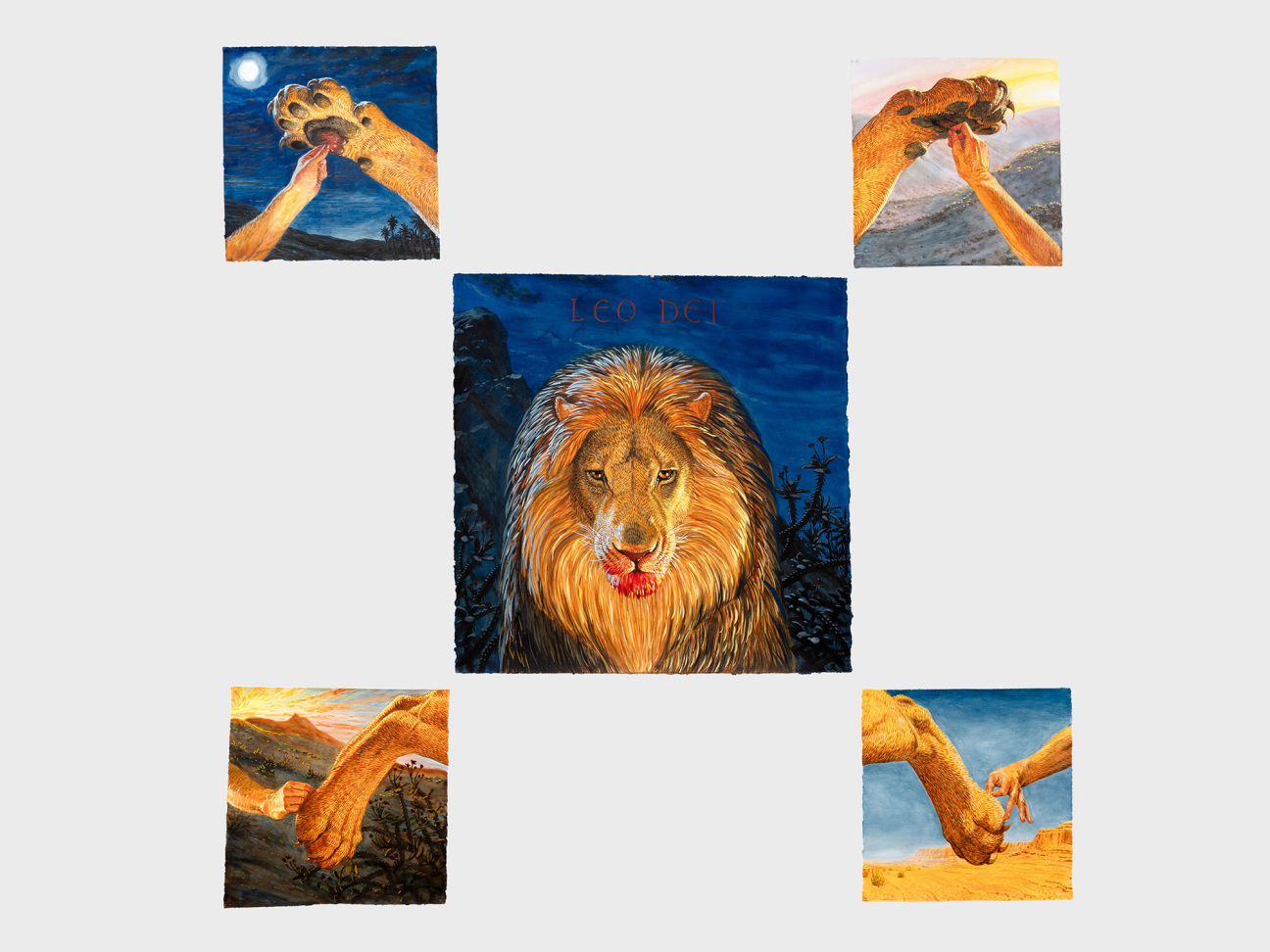
Legend has it that Saint Jerome was praying when he saw the lion limping toward him. A thorn had lodged itself in the beast’s shaggy paw. Instead of bolting at the sight of it like his fellow monks, Jerome drew nearer and plucked the spike out with tweezers. Because of this fateful encounter, the saint is rarely depicted without a lion at his side.
In Jacopo Tintoretto’s 1580 work Apparizione della Vergine a San Girolamo (The Apparition of the Virgin to St. Jerome), he is visited by a vision of the Virgin Mary, and there at his feet is his loyal companion. The Renaissance master’s painting lives in the Ateneo Veneto, a centuries-old cultural and literary institution in Venice, and it served as a crucial entry point for “Lion of God,” Walton Ford’s first solo exhibition in Italy, on view at the center through September. In contrast to Tintoretto’s depiction, the New York–based artist’s canvases elevate Jerome’s subservient lion to main character status.

In one of the tableaux, the lion carries a book in his bloody fangs. In another, he transports a basket’s worth up a mountain. As the exhibition unfurls across the Ateneo’s Aula Magna and Sala Tommaseo, a parody of the human pursuit of knowledge emerges, one in which we are as incapable of learning as this illiterate animal.
The quest to challenge the intellectual chasm between humans and wilder creatures is longstanding for Ford, who has examined many aspects of the natural world over the past three decades. “I don’t want to send overt environmental messages, or even to refer to contemporary issues,” he explains. “Once the images appear to me, the process becomes like dream analysis; I can detect a subconscious logic, or throughline.”

The Venice exhibition coincides with a show at New York’s Morgan Library & Museum, “Birds and Beasts of the Studio,” in which curator Isabelle Dervaux showcases 63 studies by Ford, from quick sketches at the zoo to small watercolors. The artist also sifted through the museum’s archives to put his works in dialogue with a selection of drawings by historical animaliers, from Maria Sibylla Merian to John James Audubon. With these pairings, the artist situates himself within a lineage of animal painters and makes the case for the enduring power of a disappearing trade.
The concurrent exhibitions, both set in historic libraries, find meaning in the contrast between the collected annals of human knowledge and snarling creatures on display. Ultimately, says “Lion of God” curator Udo Kittelmann in a statement, “[Ford’s] paintings are a plot about the arrogance of human nature. Yesterday, today, and tomorrow.”
"Birds and Beasts of the Studio" is on view through October 20, 2024 at the Morgan Library & Museum in New York. "Lion of God" will be on view from April 17 through September 22, 2024 with Kasmin at Ateneo Veneto in Venice.










 in your life?
in your life?

